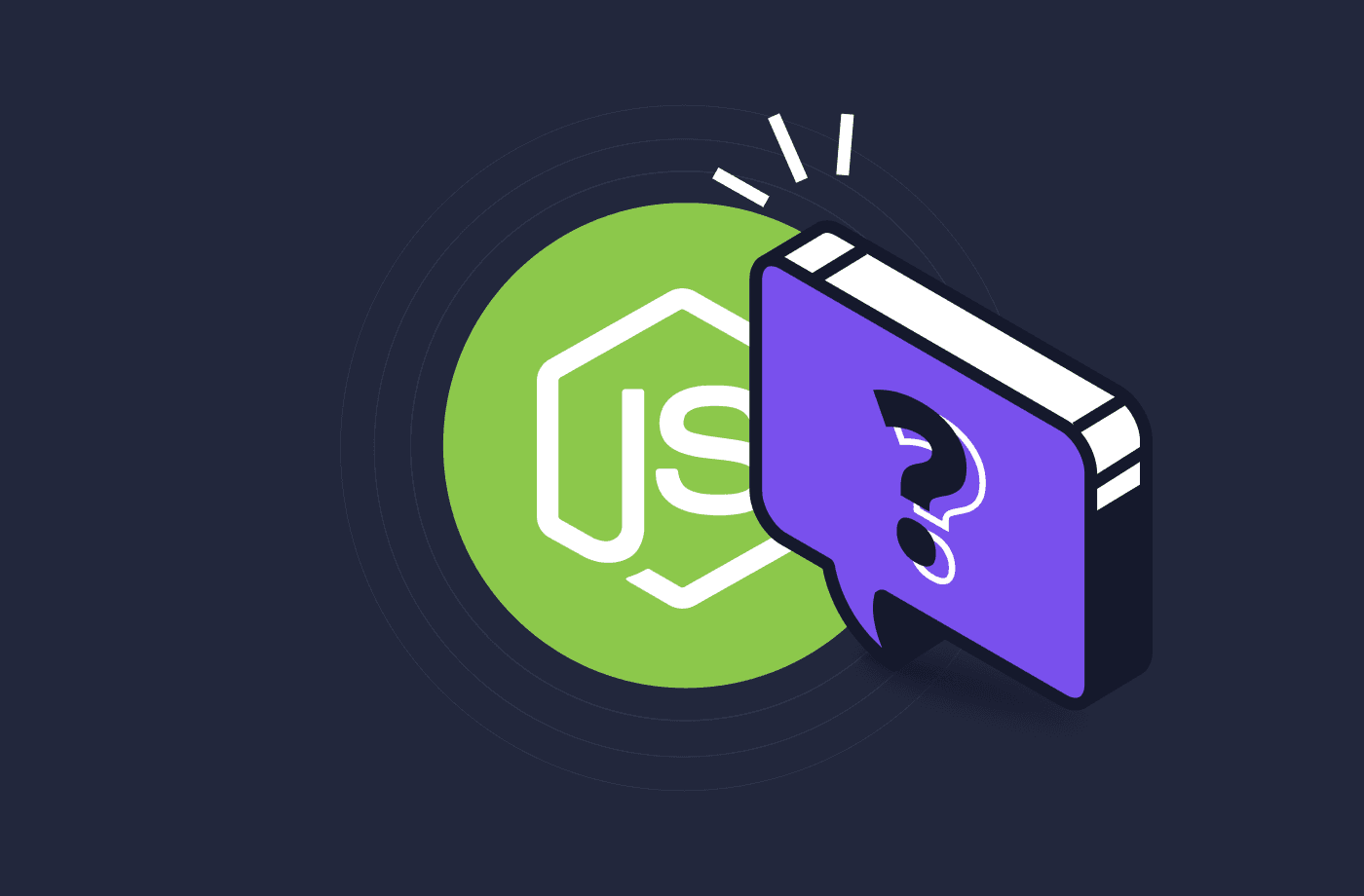Node.js is a robust runtime environment that has revolutionized how developers build server-side applications. It allows developers to use JavaScript on both the frontend and backend, making it the perfect choice for building scalable, high-performance applications.
According to the Stack Overflow Developer Survey 2022, Node.js was the most used web technology among professional developers, with more than 46% of votes, and it ranked 8th in the most loved technologies list. Therefore, Node.js can be considered a future-proof technology that every developer should know.
This article will provide an in-depth overview of Node.js, including its features, use cases, advantages, disadvantages, step-by-step guides for setting up Node.js with different operating systems, and answers to some of the most frequently asked questions about Node.js.
What is Node.js?
Node.js is one of the most popular runtime environments for JavaScript, web servers, and other network applications in general. It is open-source, cross-platform, and known for its single-threaded asynchronous event-driven concurrency model. It was introduced in 2009 and revolutionalized the development world since it allowed developers to run JavaScript outside web browsers.
Node.js is written in C, C++, and JavaScript. The core components of Node.js - the V8 engine and the libuv library - are written in C++ and C, respectively, since these languages provide low-level access to system resources, making them well-suited for building high-performance and efficient applications. JavaScript is mainly used to write the application logic.
How Node.js Works
When you run a JavaScript program in Node.js, the V8 engine will first parse the code to build an Abstract Syntax Tree - AST (Side note - ASTs are a foundational concept in Amplication for generating code). The interpreter takes the AST generated by the V8 parser and generates bytecode from the AST. Lastly, the compiler compiles the bytecode into binary machine code that matches the CPU architecture of the running host.

Although Node.js is single-threaded, it uses an event-driven, non-blocking I/O model to handle multiple requests simultaneously without blocking others. This behavior is achieved through the event loop.
As the name implies, the event loop is a loop that runs continuously and waits for events to occur. When an event occurs, the event loop will add the event to an event queue. If there are no other pending events in the queue, the event loop will execute the event and remove it from the event queue. If there are any other events in the queue, they will be processed one at a time in a non-blocking manner.
For example, consider the below example with two setTimeout functions:
console.log('Starting');
setTimeout(function() {
console.log('Timer 1 finished');
}, 3000);
setTimeout(function() {
console.log('Timer 2 finished');
}, 2000);
console.log('Stopping');
Let's break down the execution of the above example into steps to understand better how the event loop works.
- The script will start and log "Starting" in the console.
- The first
setTimeoutfunction is called, and it will schedule the execution of the function passed to it after a delay of 3 seconds. - The second
setTimeoutfunction will then be called and schedule the execution of the function passed to it after a delay of 2 seconds. - The script will log "Stopping" in the console.
- Once the main thread execution finishes, Node.js starts processing the event loop and checks if there are any pending callbacks in the event queue. In this case, two callbacks are pending in the queue with timer events.
- The event loop runs the callback for the second
setTimeoutfunction, logs "Timer 2 finished" in the console, and removes the event from the queue. - The event loop then runs the callback for the first
setTimeoutfunction, logs "Timer 1 finished" to the console, and removes the event from the queue. -Once the event queue is empty, the event loop will again start waiting for new events to add to the event queue.
The event loop will constantly check the event queue for completed events. When an event's delay time has passed, it is moved from the event queue to the call stack for execution. In this case, the second setTimeout function has a shorter delay time than the first. So, it will be moved from the event queue to the call stack before the first setTimeout function. That's why the output of the example will look like the below:
Starting
Stopping
Timer 2 finished
Timer 1 finished
What Are the Features of Node.js?
- Asynchronous I/O - Node.js uses an event-driven, non-blocking I/O model to handle multiple requests simultaneously without blocking the execution of other requests.
- Cross-platform - Supports Windows, macOS, and Linux operating systems.
- Fast startup time - Unlike other runtime environments, Node.js has a fast startup time. So developers can quickly test and iterate on their code.
- Web socket support - Built-in support for web sockets, allowing bi-directional communication.
- Large ecosystem - Many open-source modules and packages are available in NPM.
- No buffering - Node.js does not buffer data. Data is processed as soon as received, resulting in faster response times and reduced latency.
What is Node.js used for?
Node.js is a multi-purpose runtime environment that developers can use in a variety of ways:
- APIs - Highly scalable and performance-oriented APIs for web and mobile applications.
- Real-time applications - Ideal for real-time applications like chat apps and online gaming platforms.
- Microservice - Developers can easily design microservice architectures with Node.js. Furthermore, they can use tools like Amplication to generate fully functional services based on Typescript and Node.js with popular technologies such as (but not limited to) NestJS, Prisma, PostgreSQL, GraphQL, and MongoDB.
- Cross-platform application development - Can be used for desktop application development with Electron.
- IoT - Perfect for building applications requiring real-time communications.
- Single page applications - Works well with frontend frameworks like Angular, React, and Vue.js.
Pros of Node.js Development
- Node.js is excellent for high-performance applications since it is built on the V8 JavaScript engine.
- Highly scalable since its event-loop mechanism helps to process requests non-blocking.
- Simplifies web development by allowing developers to use JavaScript for both frontend and backend development.
- Huge active user community.
- Cost-effective since Node.js is open-source.
- Easy integrations with other development tools and technologies like Express, AWS, Socket IO, MongoDB, etc.
Cons of Node.js Development
- Using too many callbacks to write asynchronous code can cause callback hell.
- Node.js is not designed to handle CPU-intensive tasks like video encoding, data encryption, or scientific computing.
- Developers need to take extra measures to increase the security of their applications.
- There are difficulties in debugging due to asynchronous control flow.
- NPM dependencies are hard to manage - some packages are not stable or not well documented or might have security issues. In addition, project size grows unexpectedly with nested dependencies.

How to Install Node.js
Installing Node.js is simple and one of the first things developers should do when setting up their machines.
Step 1 - Download the latest LTS Node.js version from their webpage. Make sure to select the appropriate installer based on your operating system.

Step 2 - Run the installer file and follow the installation wizard.

Step 3 - After the wizard completes, open the CMD and type node -v to verify the installation. It will log the Node.js version you installed. (e.g., v18.12.0)
Step 4 - If everything is in order, you can start a Node.js server by following these steps. You can also get the help of tools like Amplication to build high-quality Node.js applications without spending time on repetitive tasks. Click this link to learn more about the features of Amplication.
FAQs
Q1: What is the difference between Node.js and Angular/AngularJS?
Angular is a JavaScript-based frontend development framework, and AngularJs is the predecessor of Angular. On the other hand, Node.js is a server-side runtime environment that allows developers to run JavaScript code on the server side.
So, Angular/AngularJS is used to build client-side applications, while Node.js is for server-side development.
Q2: Why is Node.js popular?
Node.js is one of the most popular web technologies among developers. The use of JavaScript for server-side development, handling high concurrency, support for building highly scalable and efficient applications, and non-blocking I/O are some of the key reasons behind the popularity of Node.js.
Q3: Is Node.js a programming language?
No, Node.js is not a programming language. It is a runtime environment allowing developers to run JavaScript code outside the web browser.
Q4: Is Node.js a framework?
No, Node.js is not a framework. It is a runtime environment that provides an environment to run JavaScript code. Node.js is often mistaken as a framework since it includes several core libraries and APIs to help developers build web applications.
Conclusion
Node.js has become one of the most popular web technologies due to its excellent features like non-blocking I/O, event-driven nature, scalability, cross-platform support, and performance. It also has one of the largest developer communities and a wide range of third-party libraries to speed up development.
However, Node.js is not a silver bullet, and there are some limitations you need to understand. For example, Node.js is unsuitable for CPU-intensive tasks and requires knowledge of asynchronous programming. So, developers must identify their requirements before choosing Node.js as their runtime environment.
I hope this article provided a complete overview of Node.js, how it works, its features, and uses cases to help you decide when you should and should not use Node.js.
Node.js and Amplication
Amplication can automatically generate fully functional services based on TypeScript and Node.js to speed up your development process.
Furthermore, Amplication can include technologies like NestJS, Prisma, PostgreSQL, MySQL, MongoDB, Passport, Jest, and Docker in the generated services. Hence, you can automatically create database connections, authentication and authorization features, unit tests, and ORMs for your Node.js service.
You can find the getting started guide here.

